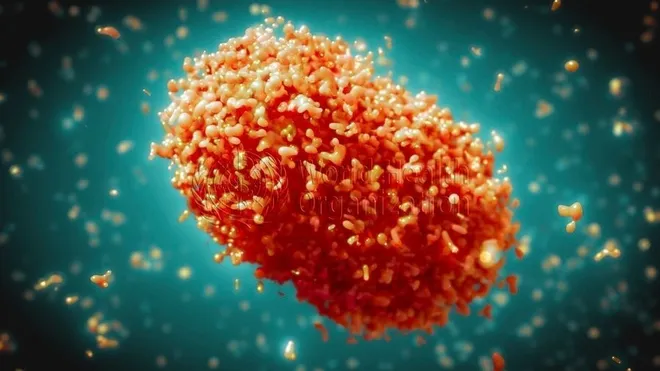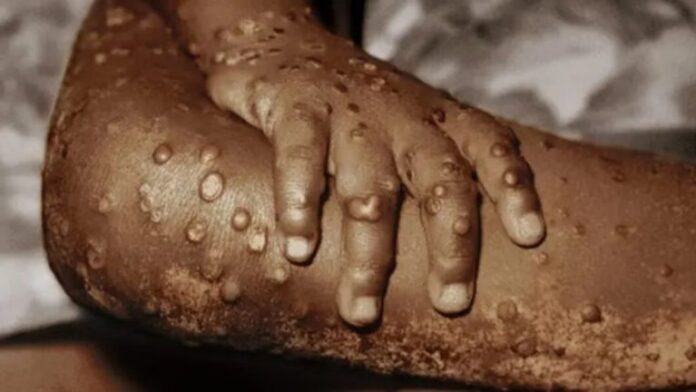What is Monkeypox?
Monkeypox, also known as mpox, is a rare viral disease that is similar to smallpox but generally less severe. It is caused by the mpox virus, which belongs to the Orthopoxvirus genus, the same group of viruses that includes the smallpox virus. The disease was first discovered in laboratory monkeys in 1958, hence the name “monkeypox.” The first human case was recorded in 1970 in the Democratic Republic of Congo.
Symptoms
The symptoms of monkeypox can be divided into two stages: the invasion period and the skin eruption period.
Invasion Period
This stage lasts between 0-5 days and is characterized by:
- Fever: One of the earliest symptoms, often high and sudden.
- Headache: Severe headaches are common.
- Muscle Aches: Myalgia, or muscle pain, is frequently reported.
- Backache: Pain in the lower back is another common symptom.
- Swollen Lymph Nodes: Lymphadenopathy is a distinctive feature of monkeypox compared to smallpox.
- Chills and Exhaustion: Patients often experience chills and a general sense of fatigue.
Skin Eruption Period
This stage usually begins 1-3 days after the onset of fever and includes:
- Rash: The rash typically starts on the face and then spreads to other parts of the body, including the palms of the hands and soles of the feet. The rash evolves through several stages:
- Macules: Flat, red spots.
- Papules: Raised bumps.
- Vesicles: Fluid-filled blisters.
- Pustules: Pus-filled lesions.
- Scabs: The lesions eventually crust over and fall off.
The rash can be quite extensive and may cause significant discomfort. The entire illness typically lasts 2-4 weeks.

Causes
Monkeypox is caused by the mpox virus, which is an orthopoxvirus. The virus is zoonotic, meaning it can be transmitted from animals to humans. Various animals, including rodents and primates, are known to carry the virus.
Transmission
Transmission can occur through several routes:
- Animal-to-Human Transmission: This can happen through direct contact with the blood, bodily fluids, or cutaneous or mucosal lesions of infected animals. Eating undercooked meat of infected animals is also a risk factor.
- Human-to-Human Transmission: This occurs primarily through respiratory droplets during prolonged face-to-face contact. It can also happen through direct contact with body fluids or lesion material, and indirect contact with lesion material, such as through contaminated clothing or linens.
- Vertical Transmission: Pregnant women can transmit the virus to their fetus through the placenta.
Treatment
There is currently no specific treatment approved for monkeypox. However, several measures can help manage the symptoms and prevent complications.
Symptomatic Treatment
- Fever and Pain Management: Antipyretics and analgesics can help reduce fever and alleviate pain.
- Hydration: Ensuring adequate fluid intake is crucial, especially if the patient has a high fever or is experiencing vomiting or diarrhea.
- Skin Care: Keeping the skin clean and dry can help prevent secondary bacterial infections. Topical antiseptics may be used on lesions.
Antiviral Treatments
While there is no specific antiviral treatment for monkeypox, some antiviral drugs developed for smallpox may be beneficial:
- Tecovirimat (TPOXX): Approved for the treatment of smallpox, it has shown efficacy against orthopoxviruses in animal studies and is being used under compassionate use protocols for monkeypox.
- Cidofovir and Brincidofovir: These antivirals have shown activity against orthopoxviruses in laboratory studies and may be considered in severe cases.
Vaccination
Vaccination against smallpox has been shown to provide protection against monkeypox. The World Health Organization (WHO) recommends that people who have been exposed to the virus receive the smallpox vaccine within four days of exposure to prevent onset and up to 14 days to reduce the severity of symptoms.
Isolation and Infection Control
- Isolation: Infected individuals should be isolated to prevent the spread of the virus. This includes staying in a separate room and using separate bathroom facilities if possible.
- Personal Protective Equipment (PPE): Healthcare workers and caregivers should use appropriate PPE, including gloves, masks, and gowns, when caring for infected individuals.
- Hygiene Measures: Regular handwashing with soap and water or using an alcohol-based hand sanitizer is essential. Contaminated clothing and linens should be handled with care and washed thoroughly.
Prevention
Preventing monkeypox involves several strategies:
- Avoiding Contact with Infected Animals: This includes not handling sick or dead animals and avoiding consumption of bushmeat.
- Practicing Good Hygiene: Regular handwashing and using hand sanitizers can reduce the risk of transmission.
- Using Personal Protective Equipment: In healthcare settings, appropriate PPE should be used when caring for patients with suspected or confirmed monkeypox.
- Vaccination: In areas where monkeypox is endemic, vaccination of at-risk populations, such as healthcare workers and laboratory personnel, can help prevent outbreaks.
Conclusion
Monkeypox is a rare but potentially serious viral disease that shares similarities with smallpox. Understanding its symptoms, causes, and treatment options is crucial for managing and preventing outbreaks. While there is no specific treatment for monkeypox, supportive care and preventive measures can significantly reduce the risk of complications and transmission. Continued research and public health efforts are essential to combat this emerging infectious disease.

